What was originally a leisure pursuit only for the hardy swimming community has developed into a sport for everyone - and we love it! Sea swimming has taken Ireland by storm and now more swimmers than ever take to the water every day, be that in lakes or popular swimming spots along the coast.
The beauty of the sport is that you need very little equipment to get going. Pack your togs and a towel and you’re ready to go. But as with every activity, there are a lot of things you can get that will make your time in the water more enjoyable. These range from safety items, to swimwear and wetsuits, neoprene accessories and changing robes to keep you cosy in and out of the water.

We have put together a broad equipment guide for you if you are starting to swim in the sea. This is particularly relevant if you are in Ireland or a similar climate where the water is cold for 8-9 months of the year.
As with all activities it is important to know your own boundaries and respond to your body’s cues. When getting into sea swimming, listen to your body, don’t go swimming alone and always make sure to be safe in the water. For more information on water safety, have a look here.
Swimsuits or Wetsuits and if so, Which Ones?
Unless you are skinny dipping which isn’t very common on Irish beaches, a swimsuit is the bare minimum you will need to get in the water and a lot of people will wear just their togs all year round. Swimsuits now also come in long sleeved options for more coverage. But if you are looking for something warmer, here is a list of possible options.
Neoprene Swimsuits or Shorts?
If you are only looking for something slightly warmer than your lycra togs, a neoprene swimsuit or shorts will offer just that. Shorts also come as buoyancy shorts and can be used for swim training if you are looking to improve your positioning in the water.

Wetsuit Tops / Jackets
A wetsuit top could be short or long sleeved and will usually be made from 1-2mm thick neoprene. If it is short-sleeved it is not going to be as warm as if it is long-sleeved for obvious reasons. Long-sleeved options are more common and popular. They can be worn on their own or underneath a wetsuit to give an extra layer of warmth.

Neoprene tops also come with a full zip in the front, called a wetsuit jacket, which makes putting them on and off easier. These are great if you are only looking to take the edge off. They are not going to provide a huge amount of warmth for an extended period of time due to their nature of being only from relatively thin neoprene. You can also get more specialised swimming tops for open water swimming made from Yamamoto neoprene to help with your swimming technique.
Shorty Wetsuits and Long-sleeved Shorty Wetsuits
A step up from neoprene jackets would be a shorty wetsuit or a long-sleeved shorty wetsuit. They are usually between 1 and 3mm thick and offer better protection of the core than just a top because your hips and waist are completely covered. Shorties are very popular in the summertime.

Long sleeved shorties are very popular in Ireland for cold water dipping as you can still experience the cold water on your legs while giving your core some thermal protection. Shorty wetsuit and long-sleeved shorty wetsuits with around 2mm thickness do not keep as warm as thicker, full-length wetsuits would, so the time you would spend in the water is shorter.
Swimming Wetsuits
Swimming wetsuits now come in many different thicknesses and options. To sum it up, these are made with swimmers in mind. They feature smoothskin neoprene (Yamamoto neoprene) and have different thickness panels so you get the buoyancy where you need it. For example you might look for extra buoyancy in the upper body and thighs to help with your front crawl technique. Or if you are an experienced swimmer, then you might not need or want the extra buoyancy.

Swimming wetsuits are often categorised as open water wetsuits and triathlon wetsuits, the latter being geared towards performance in a race. The open water wetsuits are made for casual swimmers and depending on the distance you swim, you might choose different ones.
All our swimming wetsuits are very stretchy in the arms often featuring thinner panels in the shoulders to give extra flexibility. Standard thickness for swimming wetsuits would be 3mm, but as mentioned above, they might feature thinner panels for flexibility or thicker panels for buoyancy.

Swimming wetsuits are also available as ‘thermal’ wetsuits which are made with thicker neoprene for colder conditions. They often feature a thermal lining for extra warmth.
Can Surf / Allround Wetsuits be Used for Swimming?
We get asked this a lot and for example if you are dipping more so than swimming long distance, then a surf wetsuit will work fine. A 3/2 surf wetsuit will feel similar to a swimming wetsuit as it has the same thickness, but it doesn’t improve your position in the water with strategic buoyancy panels like a swimming wetsuit would. They are often less expensive and a good value choice if you also want the option to do other sports with your wetsuit.

Winter wetsuits with 5/4 or 5/3 thickness are very buoyant and would not be what we recommend for swimming. However, if you are dipping and want the warmest option possible, then this will work for you. You just need to be aware that this is not a great solution if you want to improve your swimming technique.
If a warmer wetsuit is the one thing you need to keep getting in the water in the colder months, then I would say absolutely, do it.
Accessories for Open Water Swimming
This leads us on to the next important section about neoprene accessories. Knowing that you will be warm (or at least as warm as possible) can make the difference between finding the motivation to take the plunge or not. Of course, in the very cold months, having extra layers is not just for comfort but also for safety.
Neoprene Gloves
Neoprene Gloves come in many different variations and depending on the water temperature you might choose thinner or thicker gloves. In general, the thicker the material, the less dexterity in your fingers, so that means that for more warmth you will have less flexibility. However, the top of the range gloves of brands like O’Neill and Zone3 will offer very good dexterity while also being the warmest gloves in our range.

2mm and 3mm thickness are the most popular gloves we sell, but for deep winter you may choose 5mm, although even the high end gloves get chunky then, so they would be more suitable for surfing.
Neoprene Footwear
The choice is between neoprene socks, boots (covering the ankle) or shoes (not covering the ankle). In terms of use we would recommend socks if your priority is flexibility for swimming, independent of whether you swim a short while or long distance. Neoprene swim socks usually range from 2-3.5mm and often feature some form of anti-slip pattern on the sole as well as straps to secure them on the calf. If your priority is warmth and to have a good sole for example for a rocky beach, then a neoprene boot might be a good choice. It offers less flexibility to point your foot though so it would be most suitable for dipping. Read our Swim Sock Guide.

Neoprene boots range in thickness from 3mm to 7mm with 5mm being the most commonly used thickness all year round in Ireland. Neoprene shoes, also called rock shoes, water shoes or reef boots, do not cover the ankle. They often feature a robust sole which makes them suitable for rocky beaches or when your entrance point to the water is made from concrete. They are often between 1-2mm thick which makes them an ideal choice for the summer or if you are only looking for something to make getting in and out of the water easier.
Neoprene Headwear
Choose between a headband that covers your forehead and ears, a neoprene beanie, a swim cap with or without chin strap or even a full neoprene hood that completely covers the head and neck. Depending on the water temperature and how long you are staying in the water, you might choose a lightweight option that is less restrictive or go for the full shebang for ultimate warmth.

The most popular options we sell in the shop are neoprene beanies for dipping and swim caps with chin straps for longer distance swims as they stay in place securely. All options should cover your ears to give protection against the cold water and air.
Silicone Swim Hat
Swim hats come in a range of designs and are usually one size fits all. They will keep your hair largely dry and cover the ears, so even without a warmer neoprene hat, a swim hat will already help with keeping wind chill at bay. They are also a great opportunity to add a hi-vis element to your swim gear with the colours lie orange, pink and yellow being very popular so you can be seen in the water.
Goggles
A good pair of goggles is key if you are swimming with your head in the water. All goggles in our shop are anti-fog and we cover the full range from goggles for low light to polarised ones to take off the glare on sunny days. Photochromatic goggles are ideal if you are looking for one pair to cover all conditions and are getting more popular.

The top of the range goggles often include a case that will keep them safe in your bag, away from your wet and sandy gear so they can stay in good condition as long as possible. Cases are also available separately.
Ear Plugs
Surfers or Swimmers Ear is a condition caused by exposure to cold water and wind and can be very serious. The best way to prevent your ears from suffering in cold water and wind are ear plugs. Options range from simple silicone ones to those with different fittings depending on your ear size and little strings to prevent losing them. We would recommend to choose ear plugs that will keep the water out but let sound in so you can have the best experience. SurfEars are a great example. Read our thoughts on the SurfEars ear plugs for more info on preventing Surfers or Swimmers ear.

Tow Float
A tow float is a small inflatable buoy that you take on your swim by a waist leash. They are great to give extra visibility, especially in spaces that are shared with other water users. Unless specifically promoted as a buoyancy device like Restube, tow floats are not life saving devices. So while you can hold on and tread water for a rest, they are not made to keep you afloat.

Tow floats range from simple buoys to ones that include dry bags of various sizes and can also include LED lights if you swim in dusk/dawn/dark or hydration bags to bring water with you on a longer swim.
Tow floats are typically orange, pink or yellow for highest visibility.
Hooded Poncho Towel
A towelling changing robe will keep your modesty intact while getting changed for your swim. There are a lot of different options available, so we have written a blog post about finding the perfect one.
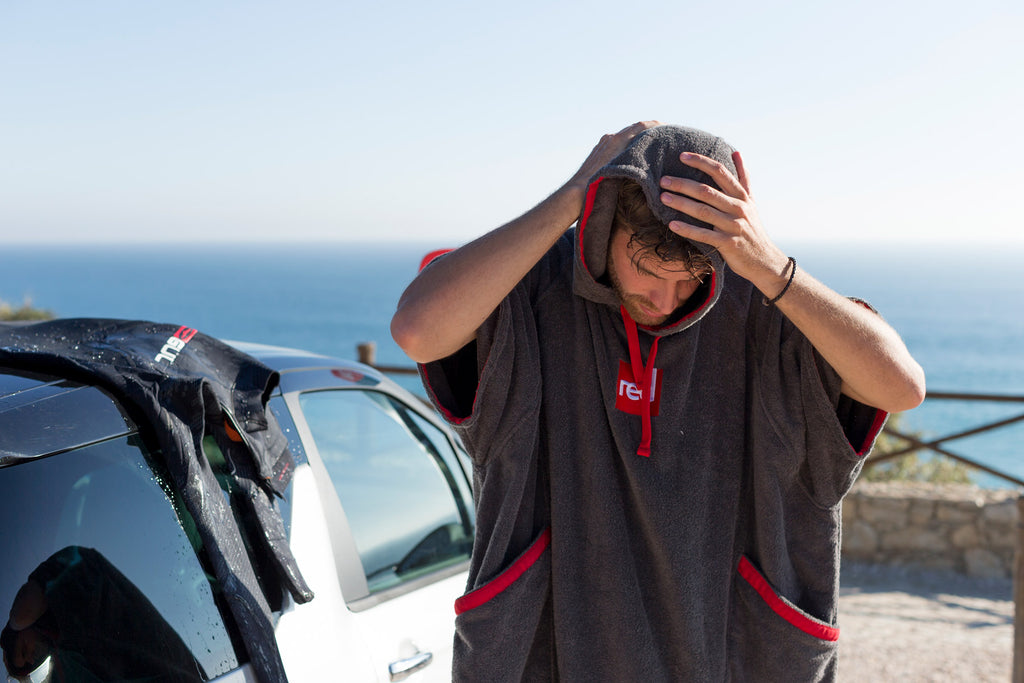
A hooded poncho towel can be made from different materials, but the two most popular ones we sell are cotton for comfort or microfibre for a quick drying and space saving option.
They can feature pockets, sleeves or even a drawstring on the hood and are available in a huge array of colours and sizes.
Weatherproof Changing Robe
For the colder months or even summer evenings, it’s great to have a weather-proof changing robe. Protect against wind and rain in waterproof and breathable oversized coats that will allow you to get changed underneath.

Available in many designs and sizes, it can be hard to pick the right one, so we wrote a blog post to delve deeper into the available options. The most popular brand Dryrobe has given the weatherproof changing robe its now widely used name, although many different brands are available. It’s a bit like Hoover!
Changing Mat
I didn’t know I needed a wetsuit changing mat until I had one. Especially on cold days it’s great not to stand barefoot on the ground and the mat provides a layer of insulation to keep your feet a little bit warmer. Changing mats also keep dirt and sand away from your equipment. If you have a wetsuit we would recommend to choose a mat big enough to drop your wetsuit into as you get out of it, they often have a drawstring and double up as carry bag, too. Smaller changing mats are available and great for swimmers in togs that don’t need the extra material.

Dry Bag / Carry Bucket
Now that you have all the gear you need a good solution to carry it to and from the beach and keep it safe from rain while you’re on the water. I have a surf bucket that I love because it’s easiest to throw all my gear into, but it’s open at the top so I use my Robie Dry Series to cover it and keep the contents dry while I’m on the water. A dry bag would keep your equipment safely dry inside and is available in many different sizes depending on how much space you need. It also comes as a backpack option, which is handy if you cycle to your swimming spot or take public transport.

Ready, Set, Swim…
There are a lot of items available to enhance your open water swimming experience and I hope you find this equipment guide helpful so you can pick the ones that are right for you. If you have any specific questions or would like some advice, we love to hear from you by email to shop@surfdock.com.
See you on the water soon,
Nina


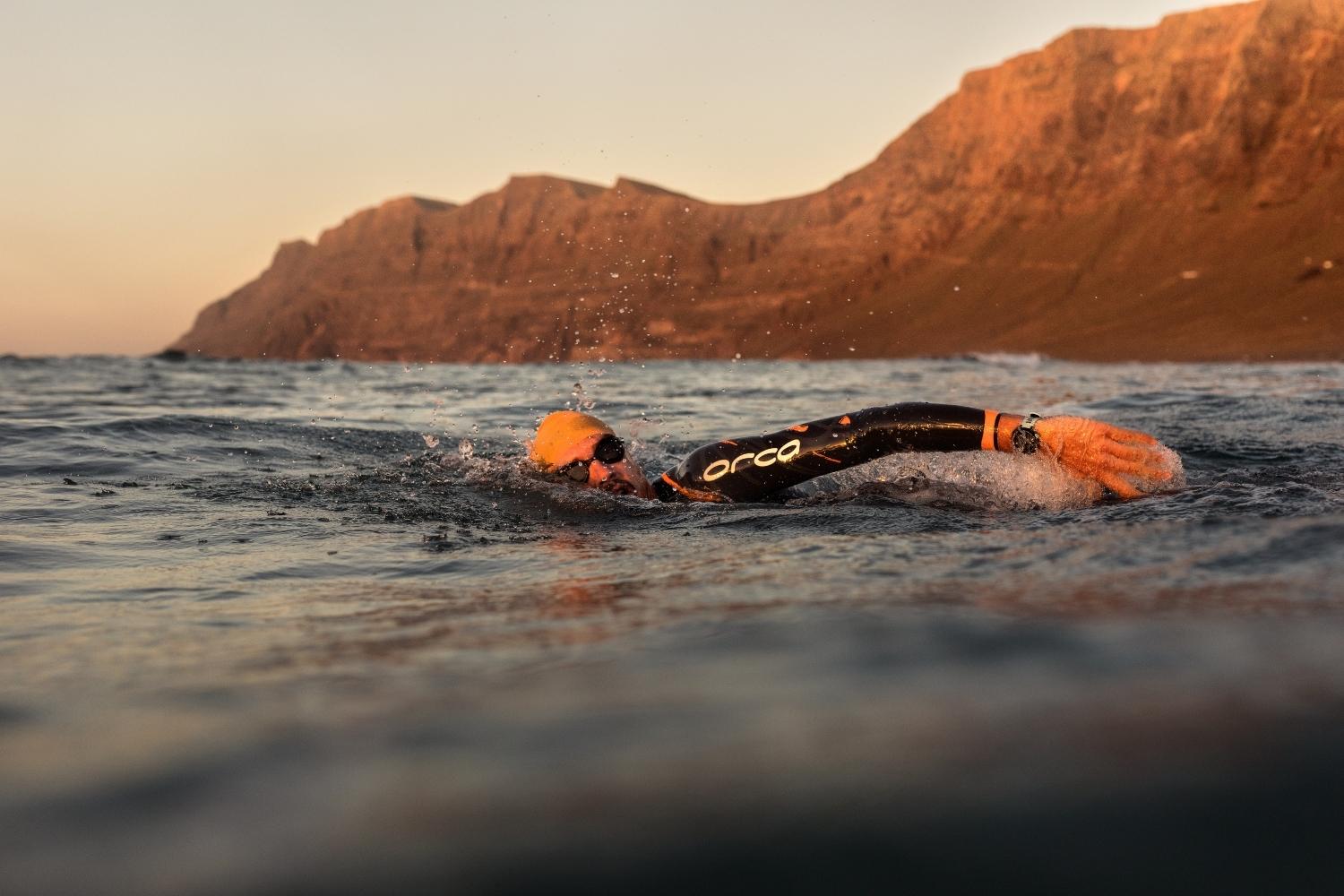
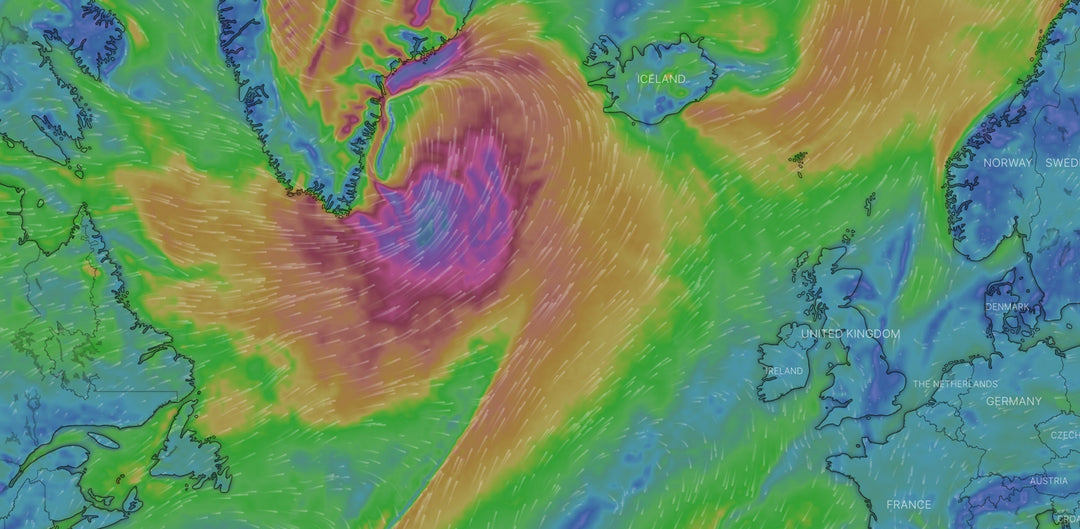
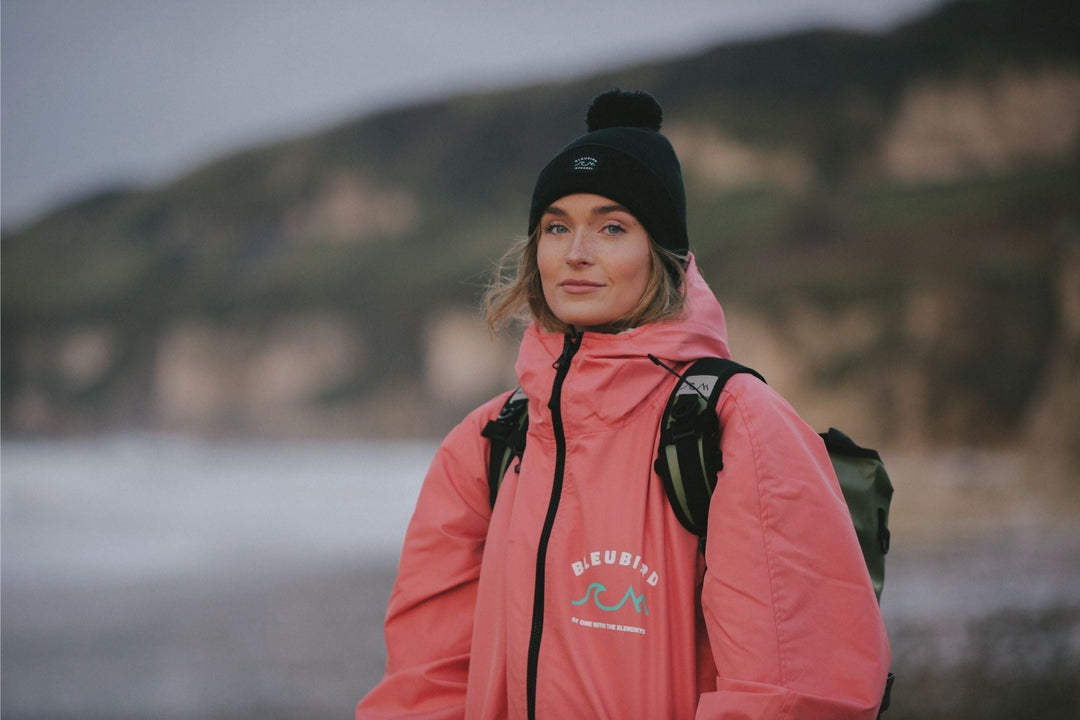
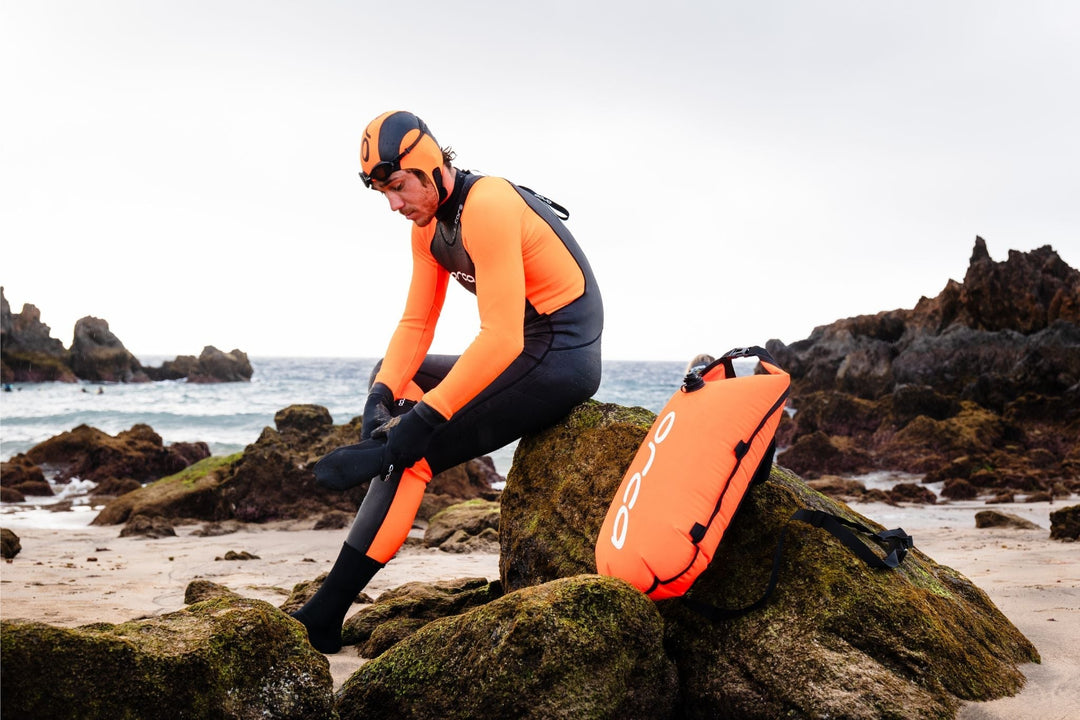
Leave a comment